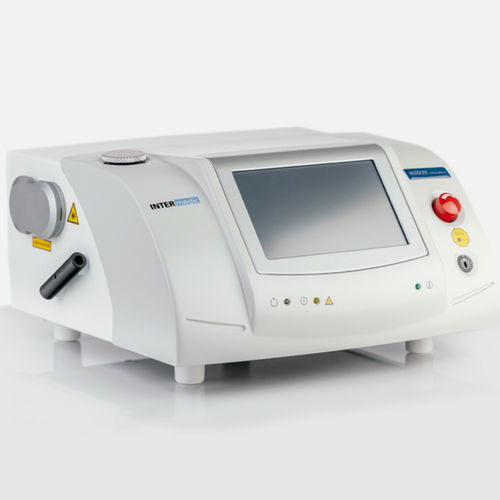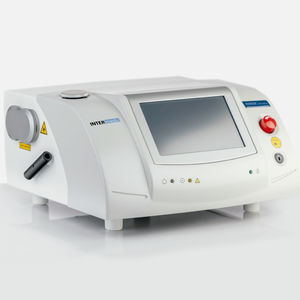
Disc decompression surgery laser PL3D™diodetabletop

Add to favorites
Compare this product
Characteristics
- Applications
- disc decompression surgery
- Amplifying medium
- diode
- Ergonomics
- tabletop
Description
Percutaneous diode laser decompression offers a minimally invasive solution for treating herniated discs and relieving back pain.
Percutaneous Laser Decompression
Since 1984, experimental studies have shown that reducing the volume in an intact disc significantly reduces intradiscal pressure. The percutaneous laser decompression technique (PL3D) uses laser energy to reduce pressure in herniated discs, facilitating patient recovery without the need for invasive surgery.
Effective treatment for herniated discs
The PL3D technique uses laser energy to reduce intradiscal pressure in herniated discs. An optical fiber is inserted through a needle into the nucleus pulposus under local anesthesia and fluoroscopic guidance. Vaporizing part of the nucleus allows displacement of the herniation away from the nerve roots. This procedure has been performed in more than 100,000 cases worldwide, with a success rate of 80 to 89% and a complication rate of less than 1%, allowing for a rapid recovery.
Advantages
Minimally invasive
It offers multiple benefits, such as less trauma to surrounding tissues, reduced postoperative pain and faster recovery.
Performed in an outpatient setting
Allows patients to return home the same day, improving their comfort and reducing the need for hospitalization
Does not require general anesthesia
It reduces the risks associated with this type of procedure. This allows a faster recovery, less hospitalization time and fewer side effects.
Does not cause periradicular scarring or spinal instability.
Ensures that neurological function remains intact and reduces the risk of long-term complications
VIDEO
Catalogs
No catalogs are available for this product.
See all of INTERmedic‘s catalogs*Prices are pre-tax. They exclude delivery charges and customs duties and do not include additional charges for installation or activation options. Prices are indicative only and may vary by country, with changes to the cost of raw materials and exchange rates.


